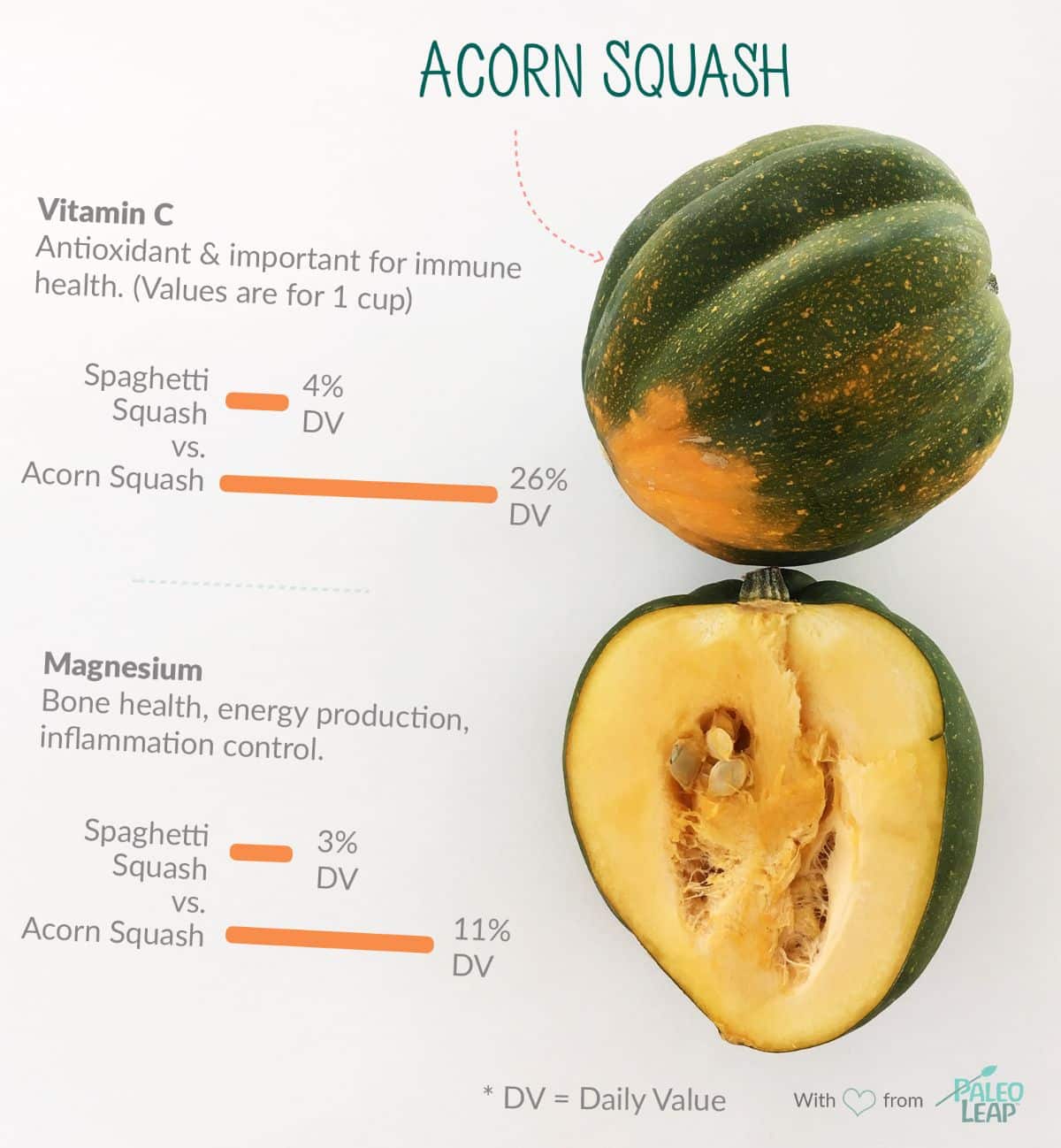
These acorn-shaped squash are considered a winter squash and a great source of vitamin C and fiber. Like other winter squash, they reach maturity during the fall and winter months, and are an excellent source of healthy carbohydrates. They have a sweet and nutty flesh, and are great pureed or diced and roasted in the oven.
Nutrition Details
 Macros in Context
Macros in Context
Here's how a serving of 1 cup of acorn squash stacks up in the context of a typical Paleo meal:
Blue bars show the typical range in grams for a Paleo meal. For example, a Paleo meal usually includes 30-60 grams of fat, but where you personally fall in that range will depend on your preference.
Orange dots shows how 1 cup of acorn squash fits into the typical nutrient profile of a Paleo meal.
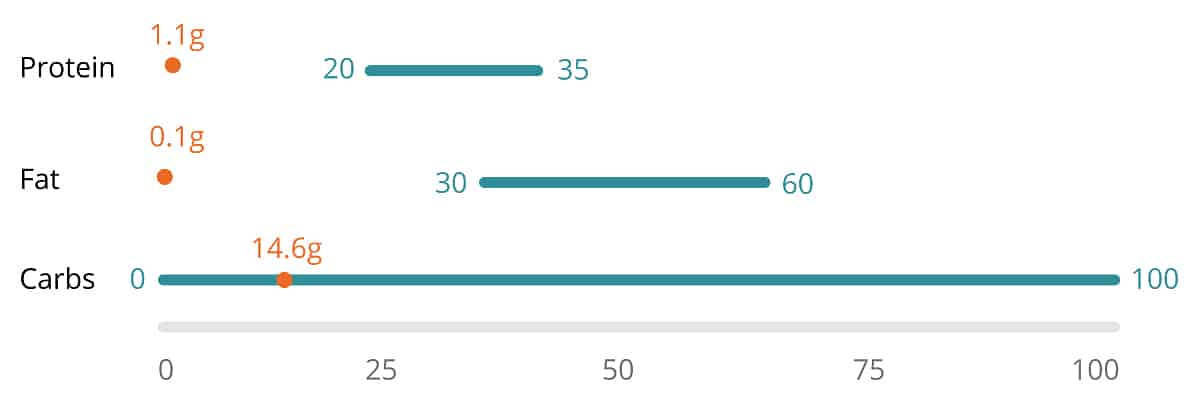
 Buy It
Buy It
Acorn squash are named after their resemblance to an acorn nut. Harvested in the fall and winter, acorn squash have green and orange-speckled skin with a yellow-orange flesh.
- SEASON: Acorn squash are harvested before the first frost. Acorn squash turn dark green when ready to harvest.
- STORAGE: Uncooked acorn squash will store for a longer period of time because of it's hard exterior rind, from a few weeks to a few months. Store squash in a dark, cool place.
- COLORS: When acorn squash are ripe, the thick rind will be hard and turn dark green in color.
 Cook It
Cook It
SOUP
Make a curry-inspired soup, then serve with spicy meatballs.
STUFF
Cut an acorn squash in half, coat with butter, then stuff and roast with Italian sausage and veggies.
ROAST
Slice squash into wedges, sprinkle with salt and pepper, then roast until tender.
PUREE
Bake acorn squash, then puree in butter, salt and nutmeg.
 Recipe Ideas
Recipe Ideas
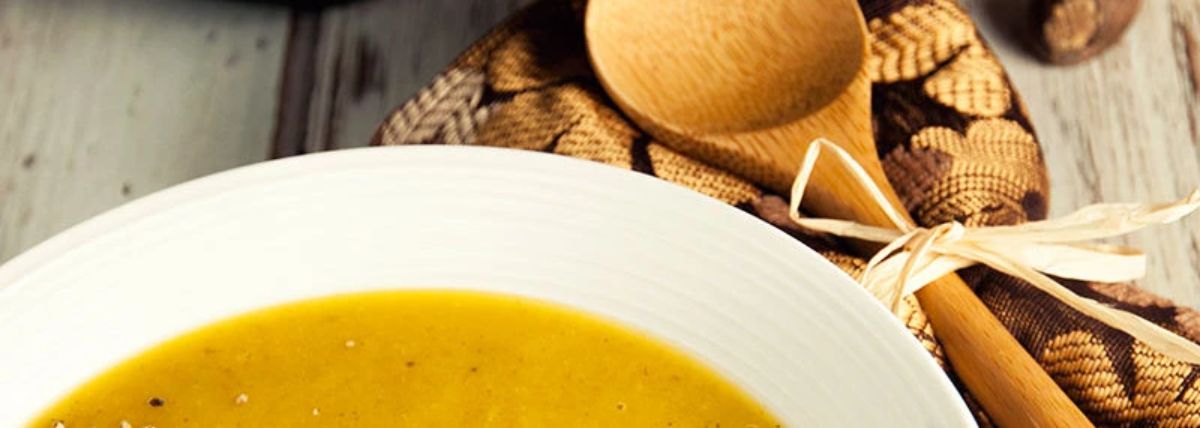
Curried Acorn Squash Soup
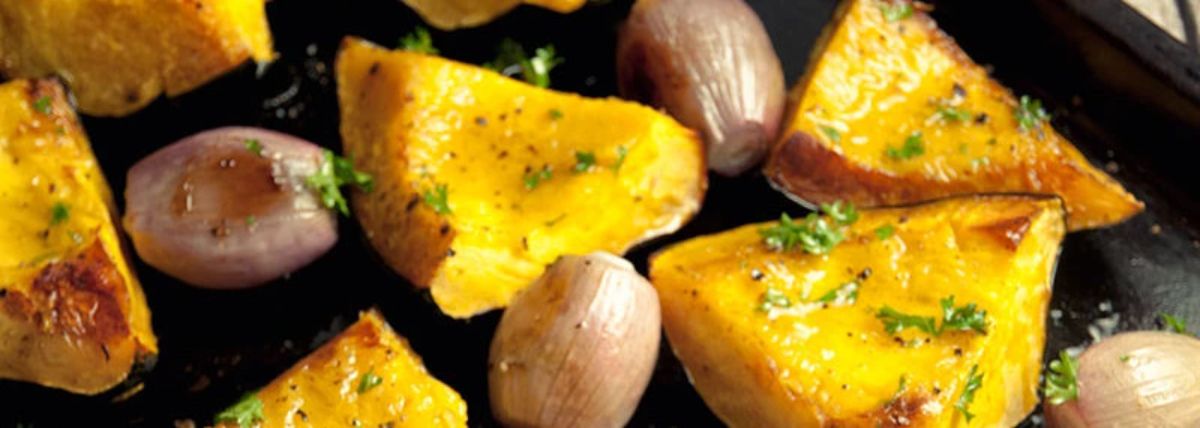
Roasted Acorn Squash And Shallots
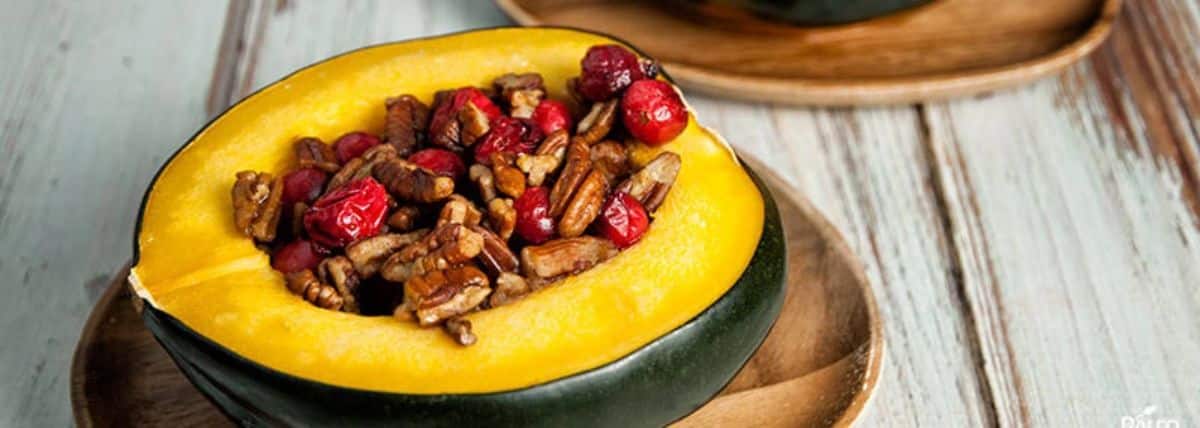
Acorn Squash with Walnuts & Cranberries
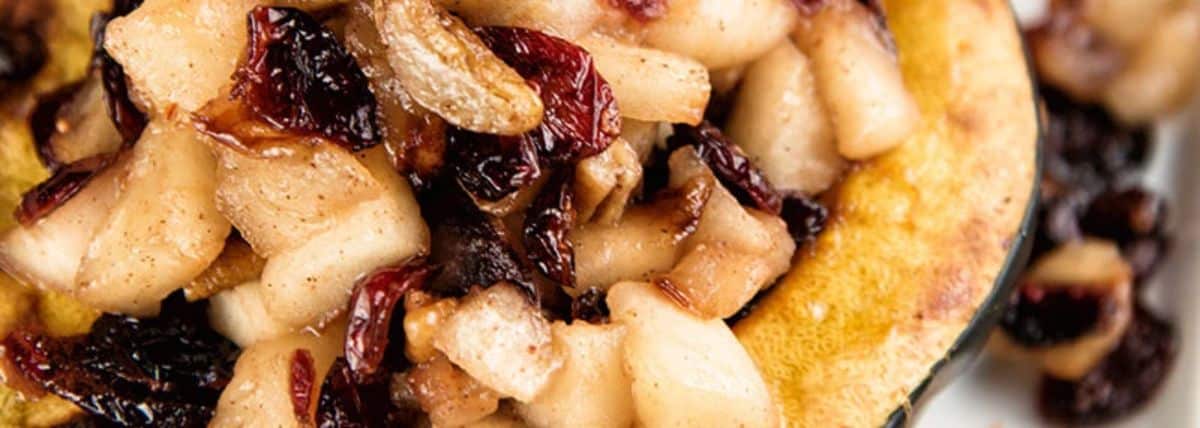


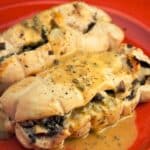

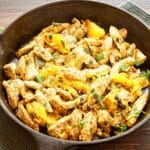
Leave a Reply